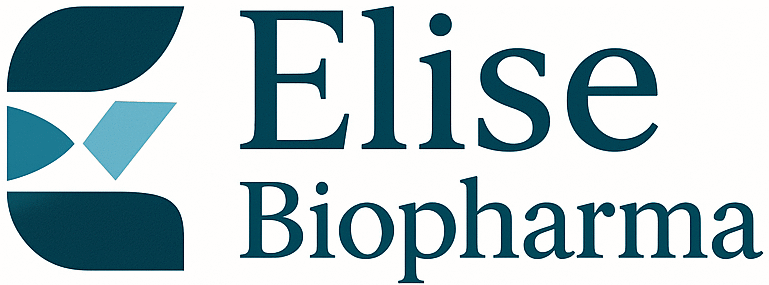In biomanufacturing, Escherichia coli (E. coli) has become the microbial engine behind everything from diagnostics and biologics to alternative proteins. Its growth kinetics, low cost, and genetic pliability make it an industry favorite. But the next-generation CDMO must be more than just a fermentation service provider—it must be an agile, automated, green innovation partner.
This post lays out what the future-ready E. coli CDMO must include—from digital twins to cell-free systems, from green chemistry to modular GMP scale-up.
1. 🏗️ Modular Infrastructure and Flexible Scaling
The next-gen CDMO needs modular bioreactor suites, from 2L process development to 10,000L commercial systems. Companies like Fujifilm Diosynth and Lonza are leading the way by investing in flexible microbial fermentation suites that accommodate both high-density fed-batch and continuous processes.
Key needs:
- Bioreactors with CIP/SIP systems and PAT (Process Analytical Technology) integration.
- Unified upstream/downstream design to prevent bottlenecks during scale-up.
2. 🧬 Strain Engineering: From Service to Platform
The smartest CDMOs provide access to engineered strain libraries, co-developing processes with clients. For example, CRISPR-edited E. coli strains reduce overflow metabolism and toxic byproducts like acetate. And strains like SHuffle® T7 Express enable disulfide bond formation for complex proteins.
Trend alert:
- CDMOs should offer in-house strain banks and high-throughput screening platforms.
- Strategic advantage lies in developing cell-free extract platforms, as pioneered by Sutro Biopharma which allow fast, modular production of antibody-drug conjugates (ADCs).
3. 🤖 Bioprocess 4.0: Real-Time Analytics and Automation
Smart CDMOs implement real-time sensing, digital twins, and AI-driven feedback loops. These systems allow adaptive control over oxygen, pH, feed rates, and stress response—key for E. coli, which is prone to acetate accumulation in fed-batch mode.
What’s hot:
- Inline Raman spectroscopy and optical density (OD600) probes that feed into machine-learning models.
- Digital twins simulate fermentation in silico and enable predictive optimization before batches run.
4. 🔬 Downstream Processing Mastery
E. coli makes a lot of protein—often as inclusion bodies, requiring skillful refolding and purification. Cutting-edge CDMOs invest in high-pressure homogenizers (e.g., Avestin, Microfluidics) and robust TFF systems for diafiltration and concentration.
DSP advances:
- Hydrophobic interaction chromatography (HIC) for improved purity after refolding.
- Mass spec-integrated QC for precise confirmation of product folding and activity.
5. 🌱 Sustainability: Green Chemistry and Closed-Loop Bioprocessing
Modern CDMOs must embed circular bioeconomy principles from day one. This means reusing water, converting biomass waste into feedstock, and integrating low-energy purification technologies.
Examples:
- Use of Aqueous Two Phase Systems (ATPS) or supercritical CO₂ extraction to replace organic solvents.
- Fermentation off-gas valorization: capturing CO₂ or hydrogen sulfide as feedstock for algae or gas fermentation.
6. 📋 Agile GMP: Speed Without Compromise
Clients need more than compliance—they need speed to IND. That means nimble regulatory systems, paperless batch records, and pre-built quality modules ready to plug into any product line.
Checklist:
- Modular GMP suites with ISO 13485 / 21 CFR Part 11 systems.
- Electronic Batch Records (EBRs) and digital audit trails.
- Built-in tech transfer playbooks for first-time clients.
7. 🤝 Innovation as a Service: IP Sharing and Risk Pooling
Next-gen CDMOs must act like venture accelerators:
- Equity-for-service models lower the barrier for startups and lock in upside.
- In-house R&D with shared IP terms can boost innovation while protecting client data.
- Strategic partnerships (e.g., Resilience’s investment model) redefine the traditional vendor-client dynamic.
8. 🌍 Global Footprint, Local Execution
In a fractured geopolitical world, CDMOs must hedge risk by going glocal—offering distributed production, harmonized QA, and regional regulatory knowledge.
Key strategies:
- Redundant production facilities in North America, Europe, and APAC.
- Multilingual tech transfer and documentation.
- Secure cloud-based batch documentation for global client access.
9. 🧠 Internal LLMs + Human Capital Retention
Smart CDMOs retain both data and talent by creating AI-augmented knowledge environments:
- Train internal LLMs (language models) on deviation logs, SOPs, and fermentation histories.
- Offer clients a chatbot to review their own project reports, deviations, and change logs.
- Cultivate a lab culture that encourages side R&D projects, turning employee curiosity into patented innovation.
🌟 Conclusion: From Fermenters to Innovation Engines
As the biotech world becomes more automated, digitized, and sustainable, E. coli CDMOs must evolve—or be outcompeted by those who do.
To survive the next decade, a CDMO must:
- Think modular and scale-ready.
- Offer innovation-as-a-service.
- Embed real-time sensing and AI decision-making.
- Deliver sustainability not just in words, but water, energy, and waste.
Because in the post-genomic age, the real product isn’t the protein. It’s trust, speed, intelligence—and the invisible hands stirring the steel tanks.
